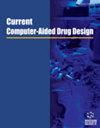通过生物信息学分析获得的腹股沟疝枢纽基因的功能调查和双样本孟德尔随机化研究
IF 1.6
4区 医学
Q4 CHEMISTRY, MEDICINAL
引用次数: 0
摘要
背景:成人腹股沟疝是外科常见病和多发病,易发生于老年人或腹壁薄弱者。尽管腹股沟疝很常见,但其形成的分子机制尚不清楚。研究目的本研究旨在确定腹股沟疝的潜在基因标记和可用药物:本研究旨在确定腹股沟斜疝的潜在基因标记和可用药物。研究方法使用 Pubmed2Ensembl 文本挖掘技术识别与 "腹股沟疝 "关键词相关的基因。GeneCodis 系统用于指定京都基因组百科全书(KEGG)中定义的 GO 生物过程术语和 KEGG 通路。使用 STRING 工具构建蛋白质-蛋白质相互作用网络,然后使用 Cytoscape.CytoHubba 和 Molecular Complex Detection 对模块(MCODE)进行可视化分析。利用 DAVID 平台数据库对基因模块进行了 GO 和 KEGG 分析。枢纽基因是那些集中在突出模块中的基因。此外,还利用药物基因相互作用数据库,根据枢纽基因之间的相互作用来确定腹股沟疝患者的潜在药物。最后,在全基因组关联研究的基础上进行了孟德尔随机化研究,以确定枢纽基因是否会导致腹股沟疝。研究结果利用文本挖掘技术确定了 96 个与腹股沟疝相关的基因。利用有 80 个节点和 476 条边的 PPI 网络构建了基因序列,并利用 CytoHubba 进行了基因序列分析。MCODE 分析确定了三个基因模块。三个模块包含 37 个基因,这些基因被聚类为与腹股沟疝患者相关的中枢候选基因。发现信号通路中富含 PI3K-Akt、MAPK、AGE-RAGE 和 HIF-1 通路。在这 37 个基因中,有 16 个基因可被 30 种现有药物靶向。研究人员使用孟德尔随机化方法检验了枢纽基因与腹股沟疝之间的关系。研究发现 9 个基因可能与腹股沟疝有关,如血浆中的 POMC、CD40LG、TFRC、VWF、LOX、IGF2、BRCA1、TNF 和 HGF。通过逆方差加权,ALB 与腹股沟疝风险增加有关,OR 值为 1.203(OR [95%] = 1,04 [1.012 至 1.089],P = 0.008)。结论我们发现了腹股沟斜疝的潜在枢纽基因,预测了腹股沟斜疝的潜在药物,并通过孟德尔随机法反向验证了潜在基因。这可能为无症状预诊断方法提供进一步的见解,并有助于研究了解与腹股沟疝相关的风险基因的分子机制。本文章由计算机程序翻译,如有差异,请以英文原文为准。
Functional Investigation and Two-sample Mendelian Randomization Study of Inguinal Hernia Hub Genes Obtained by Bioinformatics Analysis
Background: Inguinal hernia in adults is a common and frequent disease in surgery, prone to occur in the elderly or in those with a weak abdominal wall. Despite its prevalence, Molecular mechanisms underlying inguinal hernia formation are unclear. Objective: This study aims to identify potential gene markers for inguinal hernia and available drugs. objective: This study aims to identify potential gene markers for inguinal hernia and available drugs. Methods: Pubmed2Ensembl text mining was used to identify genes related to "inguinal hernia" keywords. The GeneCodis system was used to specify GO biological process terms and KEGG pathways defined in the Kyoto Encyclopedia of Genes and Genomes (KEGG). The STRING tool was used to construct protein-protein interaction networks, which were then visualized using Cytoscape.CytoHubba and Molecular Complex Detection were utilized to analyze the module (MCODE). A GO and KEGG analysis of gene modules was conducted using the DAVID platform database. Hub genes are those that are concentrated in prominent modules. The druggene interaction database was also used to identify potential drugs for inguinal hernia patients based on their interactions between the hub genes. Finally, a Mendelian randomization study was conducted based on genome-wide association studies to determine whether hub genes cause inguinal hernias. Results: The identification of 96 genes associated with inguinal hernia was carried out using text mining techniques. It was constructed using PPI networks with 80 nodes and 476 edges, and the sequence of the genes was performed using CytoHubba. MCODE analysis identified three gene modules. Three modules contain 37 genes clustered as hub candidate genes associated with inguinal hernia patients. The PI3K-Akt, MAPK, AGE-RAGE, and HIF-1 pathways were found to be enriched in signaling pathways. Sixteen of the 37 genes were found to be targetable by 30 existing drugs. The relationship between hub genes and inguinal hernia was examined using Mendelian randomization. The research revealed nine genes that may be connected with inguinal hernia, such as POMC, CD40LG, TFRC, VWF, LOX, IGF2, BRCA1, TNF, and HGF in the plasma. By inverse variance weighting, ALB was associated with an increased risk of inguinal hernia with an OR of 1.203 (OR [95%] = 1,04 [1.012 to 1.089], p = 0.008). Conclusion: We identified potential hub genes for inguinal hernia, predicted potential drugs for inguinal hernia, and reverse-validated potential genes by Mendelian randomization. This may provide further insights into asymptomatic pre-diagnostic methods and contribute to studies to understand the molecular mechanisms of risk genes associated with inguinal hernia.
求助全文
通过发布文献求助,成功后即可免费获取论文全文。
去求助
来源期刊

Current computer-aided drug design
医学-计算机:跨学科应用
CiteScore
3.70
自引率
5.90%
发文量
46
审稿时长
>12 weeks
期刊介绍:
Aims & Scope
Current Computer-Aided Drug Design aims to publish all the latest developments in drug design based on computational techniques. The field of computer-aided drug design has had extensive impact in the area of drug design.
Current Computer-Aided Drug Design is an essential journal for all medicinal chemists who wish to be kept informed and up-to-date with all the latest and important developments in computer-aided methodologies and their applications in drug discovery. Each issue contains a series of timely, in-depth reviews, original research articles and letter articles written by leaders in the field, covering a range of computational techniques for drug design, screening, ADME studies, theoretical chemistry; computational chemistry; computer and molecular graphics; molecular modeling; protein engineering; drug design; expert systems; general structure-property relationships; molecular dynamics; chemical database development and usage etc., providing excellent rationales for drug development.
 求助内容:
求助内容: 应助结果提醒方式:
应助结果提醒方式:


